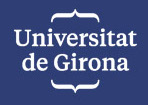| Short Name: UdG |  |
| Country: Spain |
Description
Universitat de Girona (University of Girona) is a public institution devoted to excellence in teaching and research and to participating in the progress and development of society through the creation, transmission, diffusion and criticism of knowledge related to sciences, technology, humanities, social sciences and arts. The Computer Vision and Robotics Research Group (VICOROB) are devoted to the research related to the areas of computer vision, image processing and robotics. VICOROB is composed of 75 members (22 PhDs) and in the period 2007-2017 has participated in 38 European and Spanish Research Projects (7,5M€) and 36 Industry Contracts (2M€), has supervised 55 PhD/MSc theses and published 150+ articles in journals, 50+ book chapters and 250+ conference attendances.
The “Underwater Robotics and Vision Research Lab” (CIRS) is part of ViCOROB institute. At CIRS, there are
two main research lines: underwater robotics and underwater vision. This combination of knowledge in a sole team is the most important characteristic of CIRS. In the last four years (2014-2017) the lab has consolidated its capacities in research of excellence, publishing more than a 50% of its scientific papers in journals of Q1 and attending to the most remarkable conferences in its field of expertise.
Along with its specialized singular building located at the Science and Technology park of the UdG, the lab has become a widely known infrastructure both in terms of highly qualified multidisciplinary staff and unique facilities in Europe.

Role
UdG will participate as Task Leaders in WP3 Joint Research Activities and also participate in WP7 Innovation Management and Exploitation. Participation in the Joint Research Activities involves leading JRA 3.3: Innovative AUVs and ASVs for marine exploration.
UdG will focus on exploring new fundamental technologies to make ocean exploration and data processing more efficient and complementary to the participating research infrastructures. Specifically, UdG can contribute in the development of techniques for acquisition and processing of massive amounts of data, developing algorithms to exploit big data using machine learning, large-scale mapping, and 3D visualization of acoustic and optical data.
Relevant Publications
-
R. Campos, R. Garcia. Surface Meshing of Underwater Maps from Highly Defective Point Sets. Journal of Field Robotics, 2017. DOI: 10.1002/rob.21758
-
J.D. Hernández, K. Istenič, N. Gracias, N. Palomeras, R. Campos, E. Vidal, R. Garcia, M. Carreras, “Autonomous Underwater Navigation and Optical Mapping in Unknown Natural Environments”. Sensors, no. 8:1174. 2016. doi:10.3390/s16081174
-
R. Campos, R. Garcia, P. Alliez, M. Yvinec. “A Surface Reconstruction Method for In-Detail Underwater 3D Optical Mapping”. The International Journal of Robotics Research, vol. 34 no. 1 64-89, January 2015. eISSN: 1741-3176, ISSN: 0278-3649. DOI: 10.1177/0278364914546536
-
A. Elibol, J. Kim, N. Gracias, R. Garcia. “Fast Underwater Image Mosaicing through Submapping”. Journal of Intelligent Robotic Systems, 1-21, 2016.
-
A. Elibol, H. Shim, S. Hong, J. Kim, N. Gracias and R. Garcia, Online underwater optical mapping for trajectories with gaps, Intelligent Service Robotics, vol. 9, no. 3, pp 217–229. eISSN: 1861-2784, ISSN: 1861-2776. doi: 10.1007/s11370-016-0195-4
